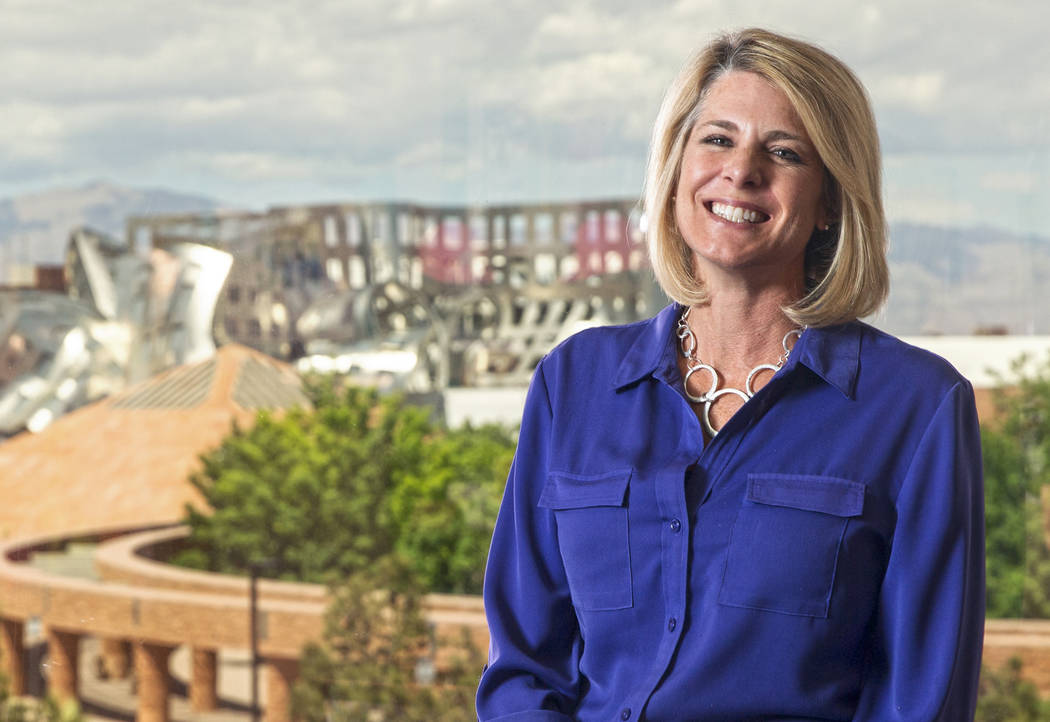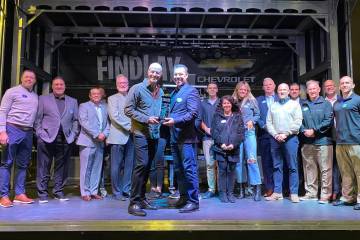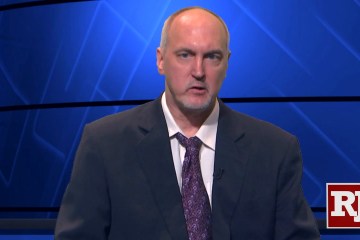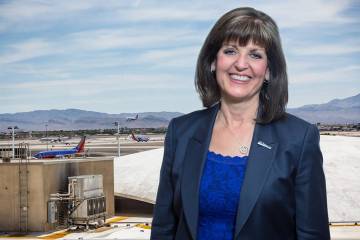
Developers and property owners think a proposed light rail corridor along Maryland Parkway, linking the airport, UNLV and downtown, would spur job growth and much-needed revitalization along the valley’s aging urban core.
Tina Quigley, the general manager of the Regional Transportation Commission made a pitch for a transit corridor to the Southern Nevada commercial real estate industry during the June 21 breakfast Southern Nevada chapter of NAIOP at The Orleans.
A study of a high-capacity transit corridor will be completed by the end of the year, and the RTC will decide whether to pursue federal funds for a light rail system.
“We’re at this critical milestone right now as we start to have serious conversations about whether we are or aren’t going to take that step toward constructing high-capacity transit corridors in Southern Nevada, and the transit-oriented economic development that comes along with that,” Quigley said. “It means we go aggressively to the federal government to start securing grant money for that project. It’s going to be an effort that’s going to require the entire community get behind and support in order to be heard (by the federal government).”
Along Maryland Parkway, the study is eyeing either a bus rapid transit, light rail or both with the right-turn lane preserved for vehicles so capacity isn’t reduced, Quigley said. An RTC committee has already backed a light rail option.
“A permanent rail gives us the opportunity to turn it into a sense of community where you will start to see through developer investments a live-and-work environment,” Quigley said.
The proposed rail would go from Russell Road, linking McCarran International Airport and proceed along Maryland Parkway by the UNLV campus, Boulevard Mall, Sunrise Hospital and to downtown and Las Vegas Medical District and end at the UNLV Medical School campus. The airport has 10,000 employees, UNLV has 3,500 employees and 30,000 students and the federal government looks at employment when deciding funding, she said.
John Tippins, founder and CEO of Northcap, a real estate company focused on acquisition, brokerage and property management, said his company has been involved with commercial and residential projects in the corridor and other developers are looking at in-fill projects. He said the city of Las Vegas and Clark County need to change zoning to allow for higher density and fewer parking spaces to make projects work.
“If you have less parking to create more walkability, you can stack more units on the land,” said Tippins, who added people are willing to pay more to live in a walkable community in a transit corridor.
David Saltman, vice president and general counsel of the Vista Group, a residential and commercial real estate development company, said there’s momentum building to construct a transit corridor along Maryland Parkway and groups, like NAIOP, can help make that a reality.
Major cities have a rail system and it’s incumbent on Las Vegas to do the same, Saltman said. Maryland Parkway is an ideal location to start because of the link of the airport, UNLV, downtown and medical district, he said.
Las Vegas only needs to look at other Western cities from Denver to Salt Lake City to San Diego and Phoenix to see the impact on economic development, Saltman said. Even Orlando has gone that route, he said.
“We compete with them for convention business, and if Orlando has light rail and we don’t, we are behind the eight ball,” Saltman said. “We have no choice. We have to put in a functioning light rail system that gets people across this community.”
From a commercial real estate perspective, Saltman said light rail is better than a bus system because it’s permanent and tells real estate investors this is the place to “bring your capital and get a high return on your investment.” Maryland Parkway has a lot of potential, he said.
“It’s in need of significant capital investment,” Saltman said. “It has gotten a little bit stale and to have something like this that is bright and shiny and glass and steel is a tremendous opportunity. Now is the time, and we need groups like NAIOP to support this idea. The cost of not putting in light rail outweighs the cost of putting it in.”
There’s going to be the need for tax credit and redevelopment financing with public and private sectors working together, Saltman said. There also needs to be zoning changes to encourage development, he said.
“Las Vegas is primarily a vehicle traffic city and most developers look at traffic volume,” Saltman said.
“The ability to have a high-capacity transit corridor and volume of people riding rail and walking would be transformative in terms of how office, retail and housing development is thought about.”
Tippins said he’s excited about the potential of what a light rail system would do along Maryland Parkway and looks at Arizona State University being connected with downtown Phoenix and how that school grew from 24,000 to more than 80,000.
“What they’ve done is pretty special; and if UNLV can continue along those lines and connect the main campus to downtown, that’s what I would like people to take away,” Tippins said.
Costs have not been outlined. Federal funds could pay for more than half of the capital costs for a bus rapid transit or rail system along Maryland Parkway. Local funds such as fuel revenue and sales taxes could be used as well.






